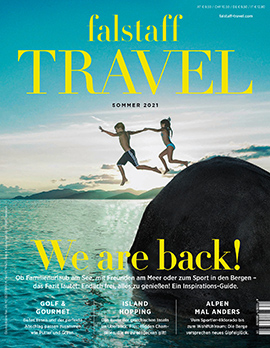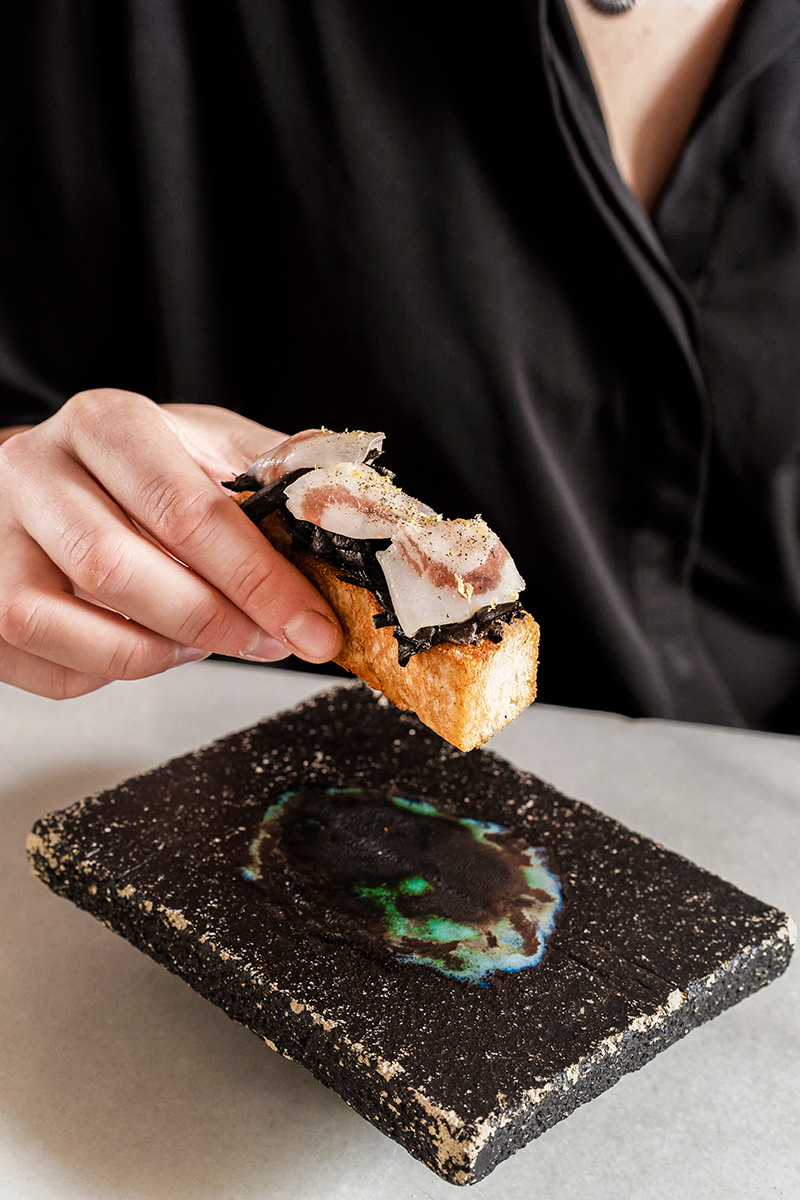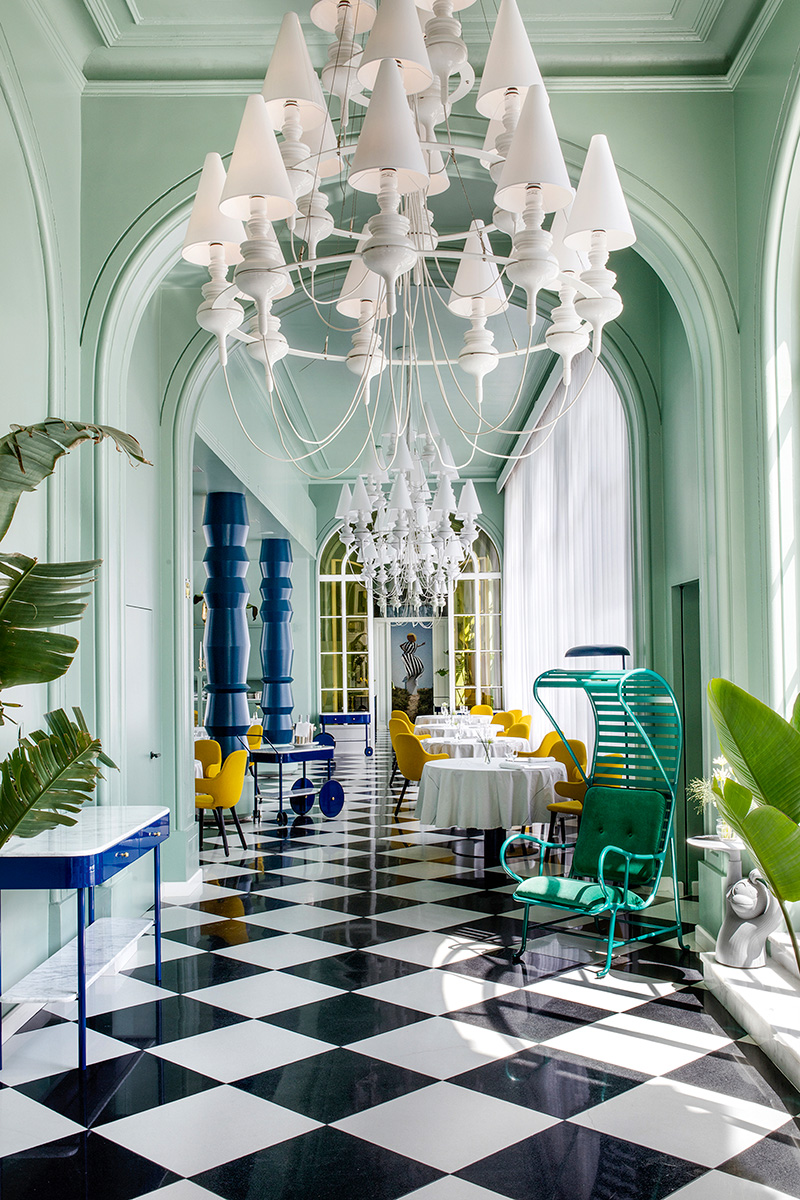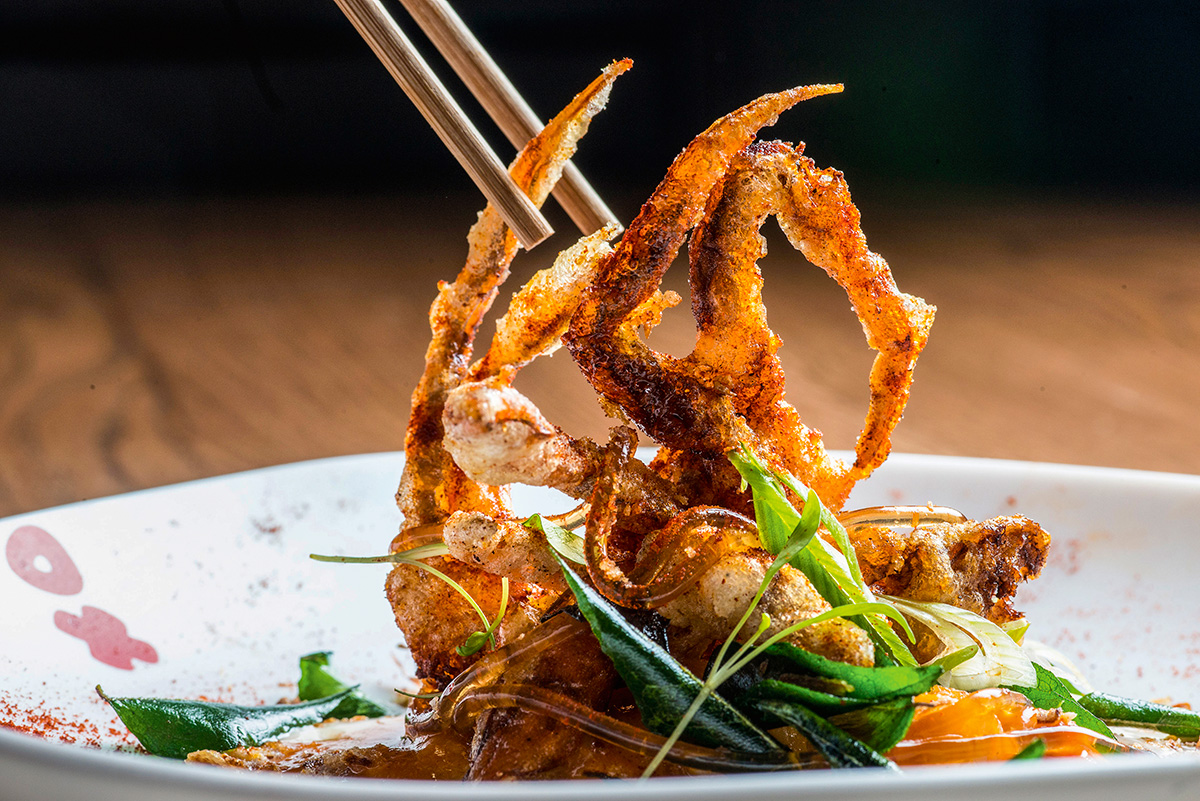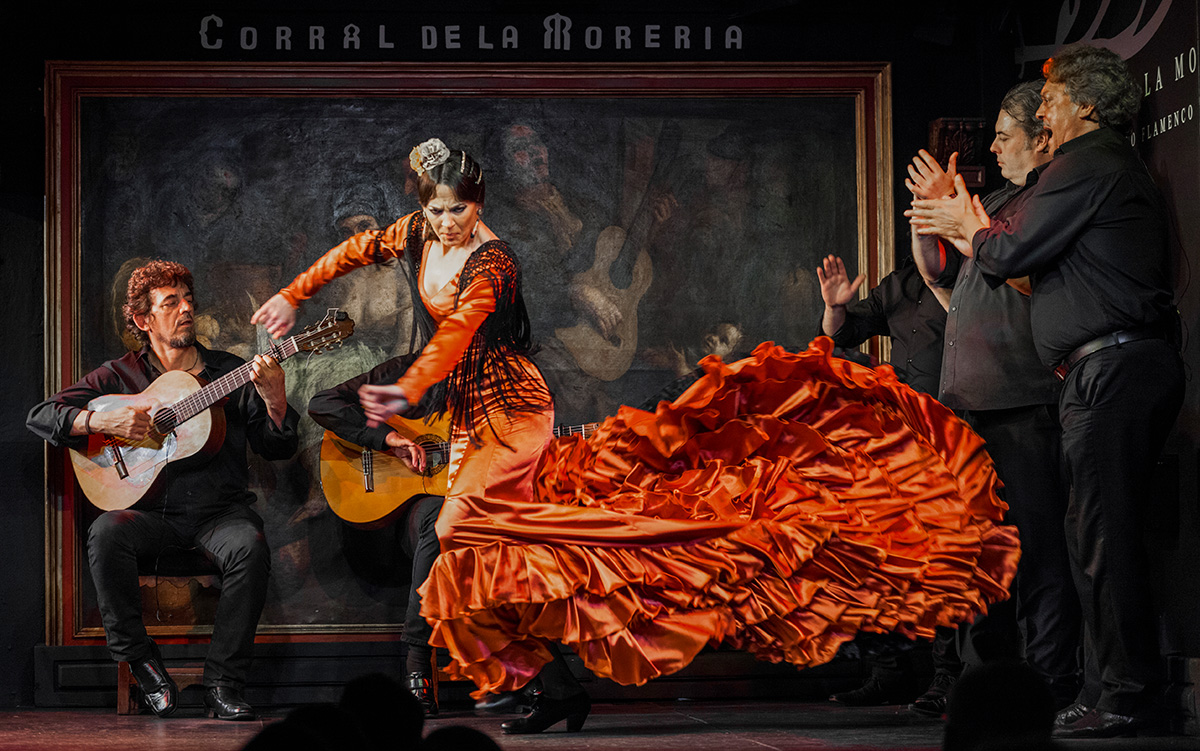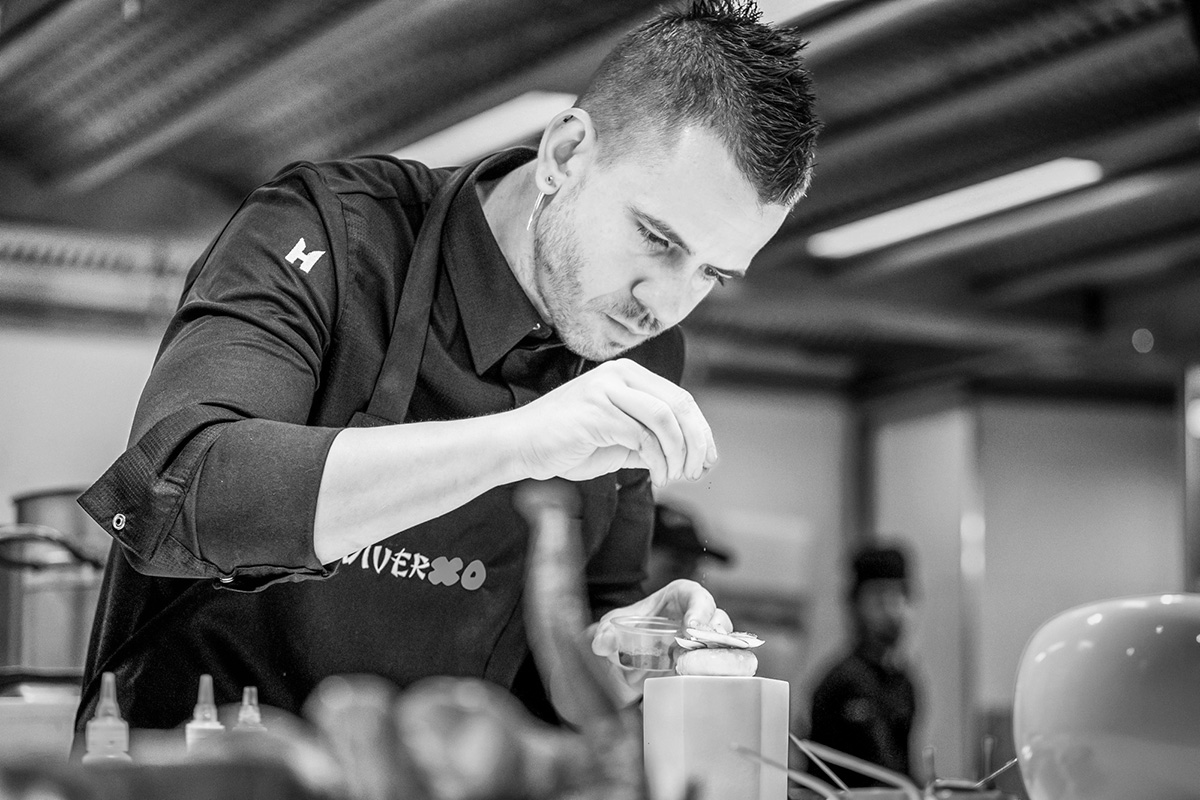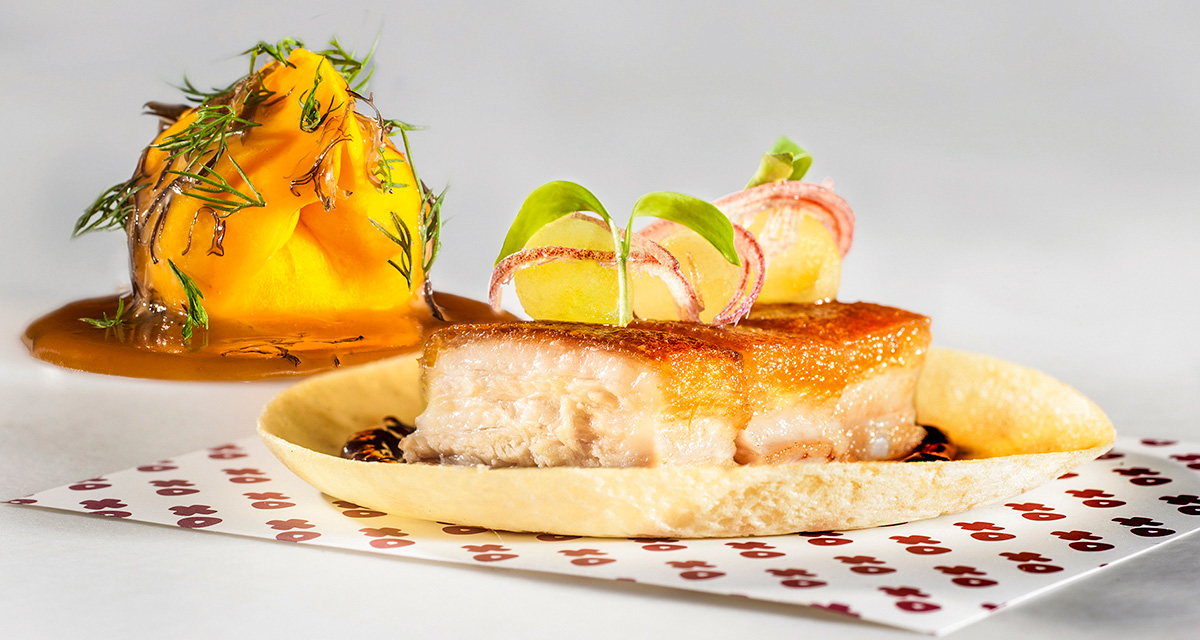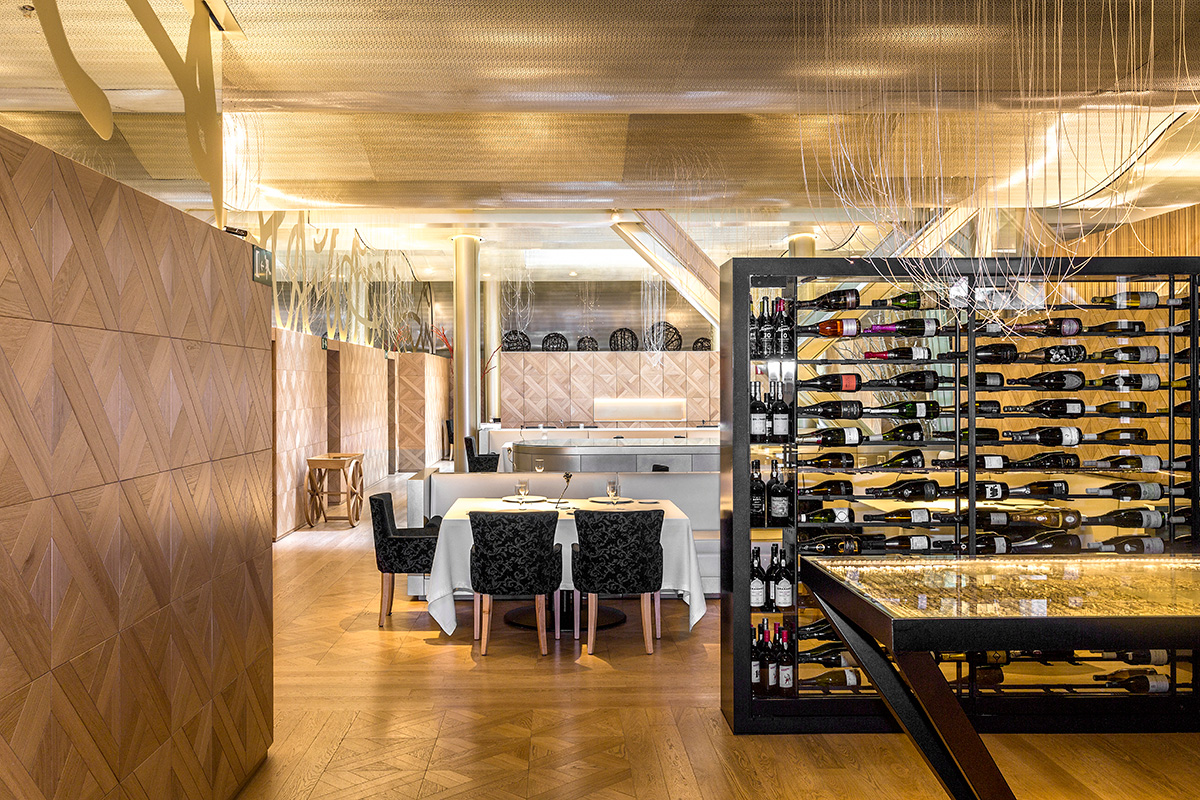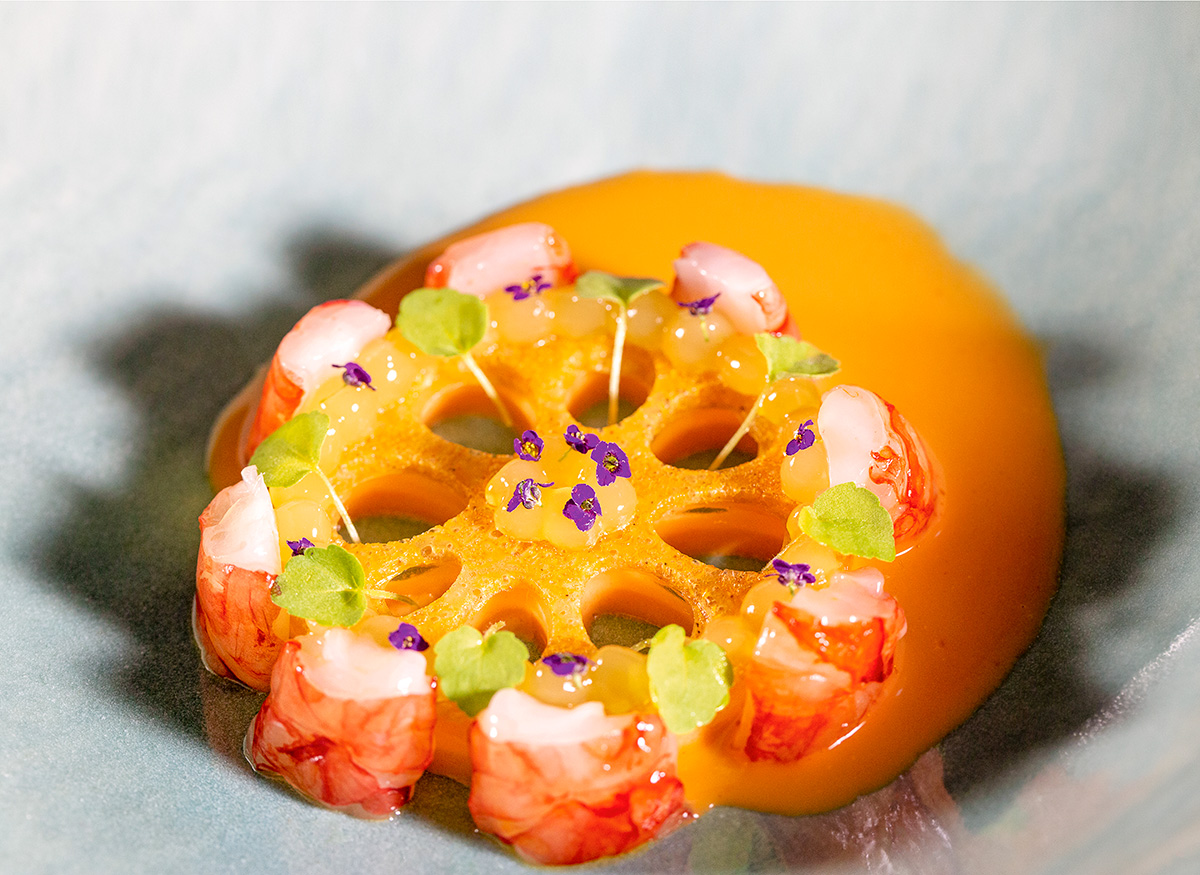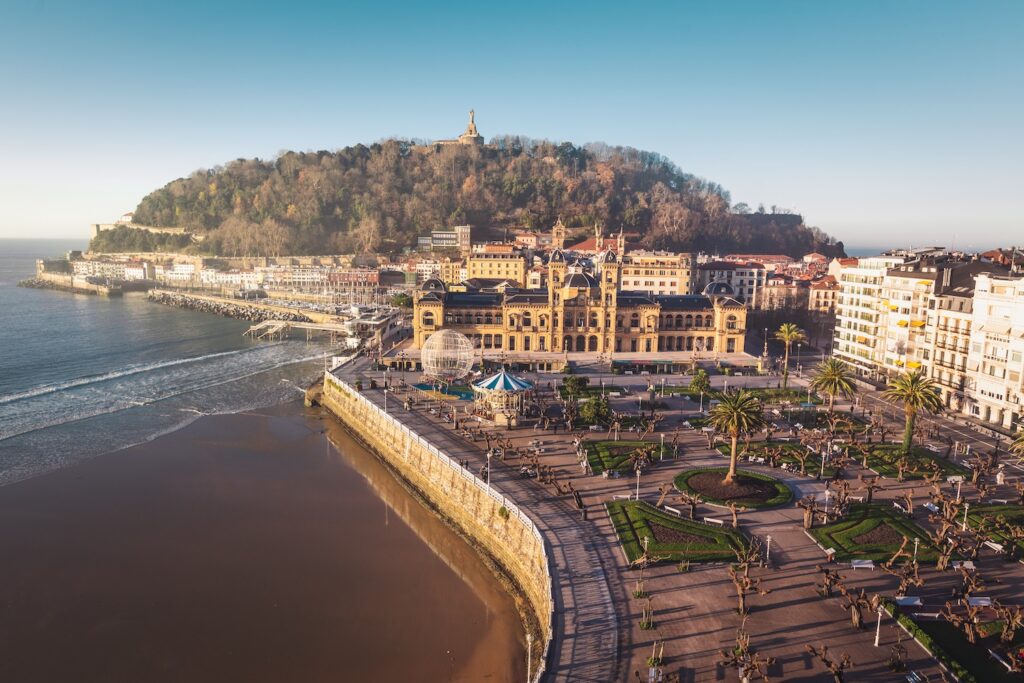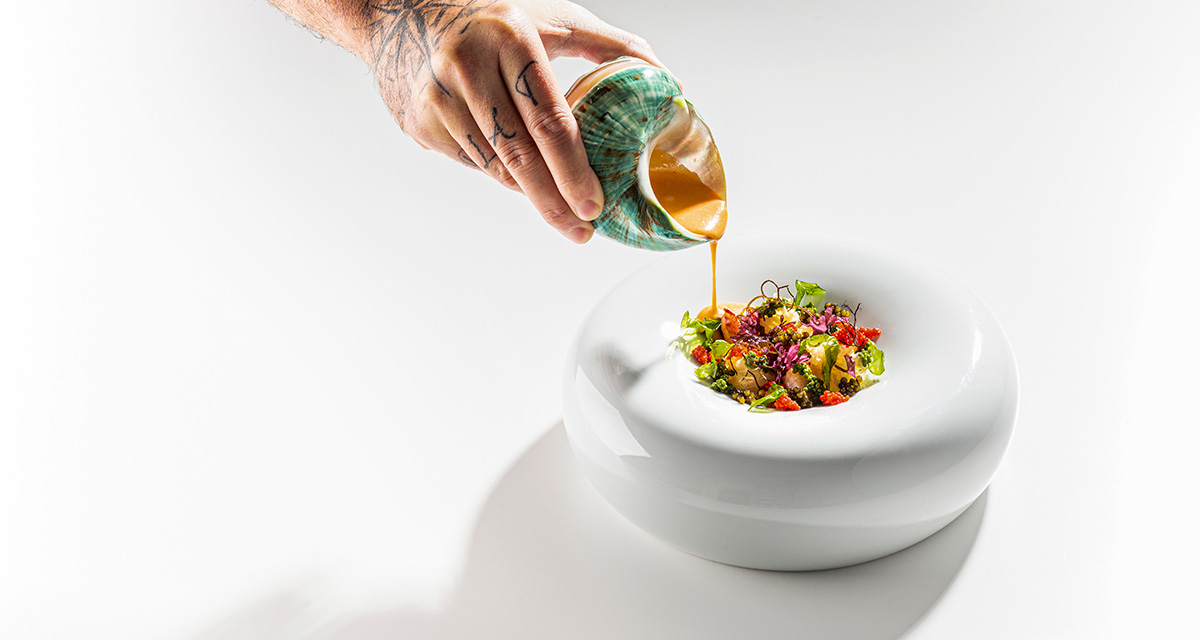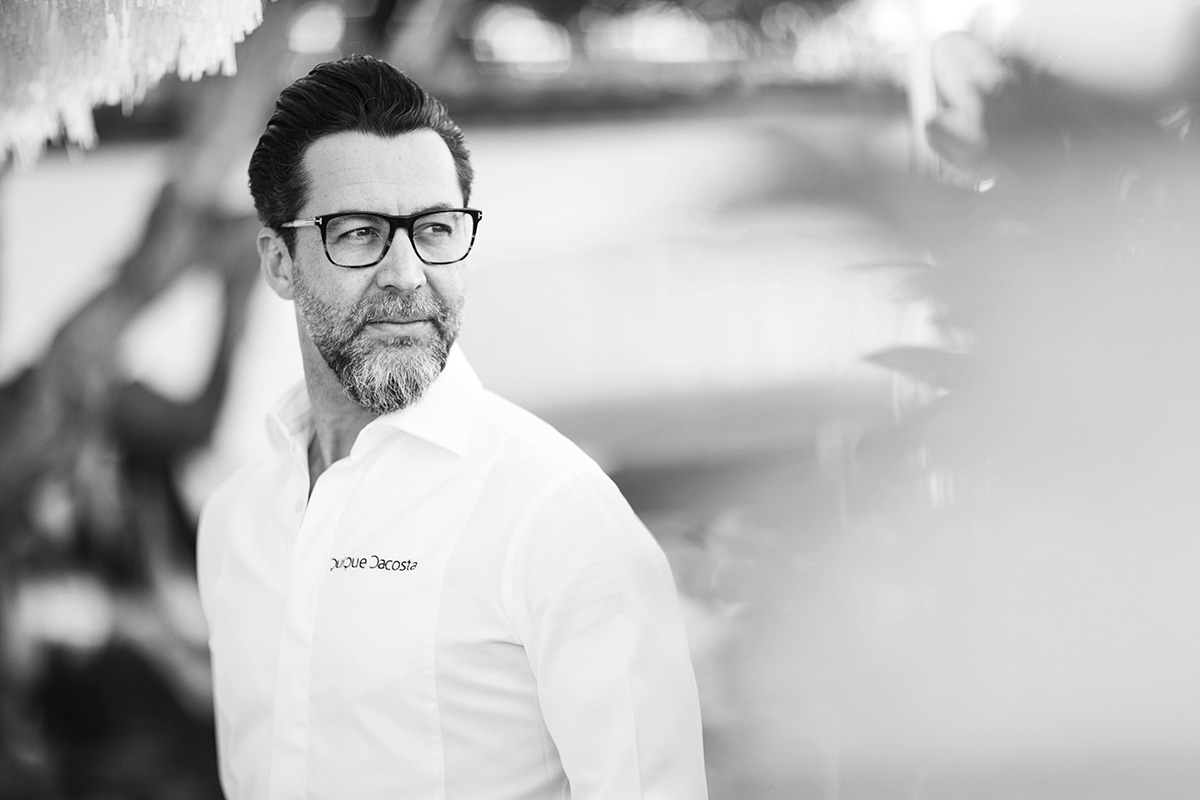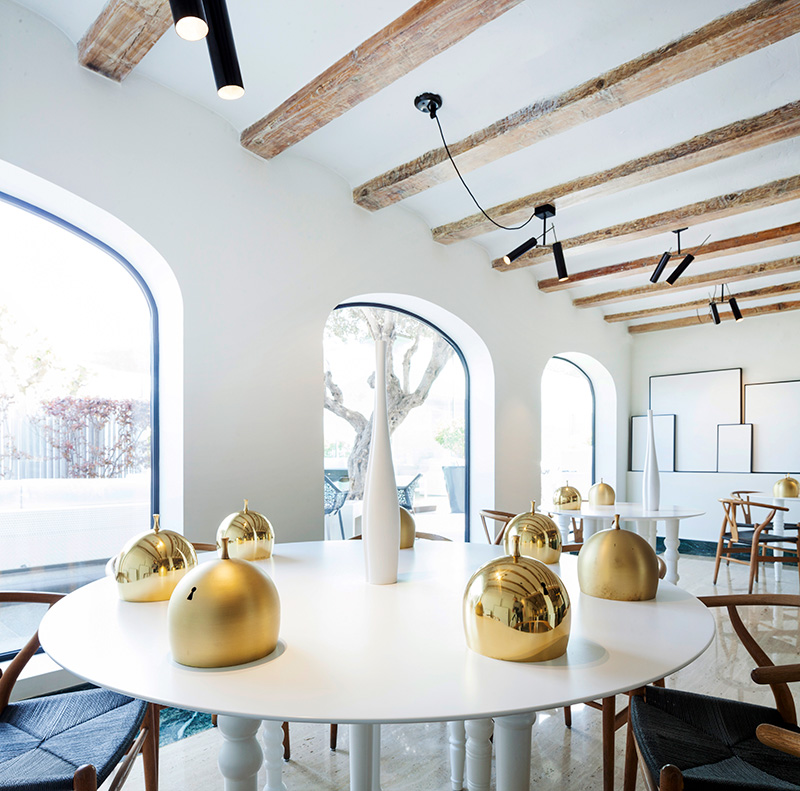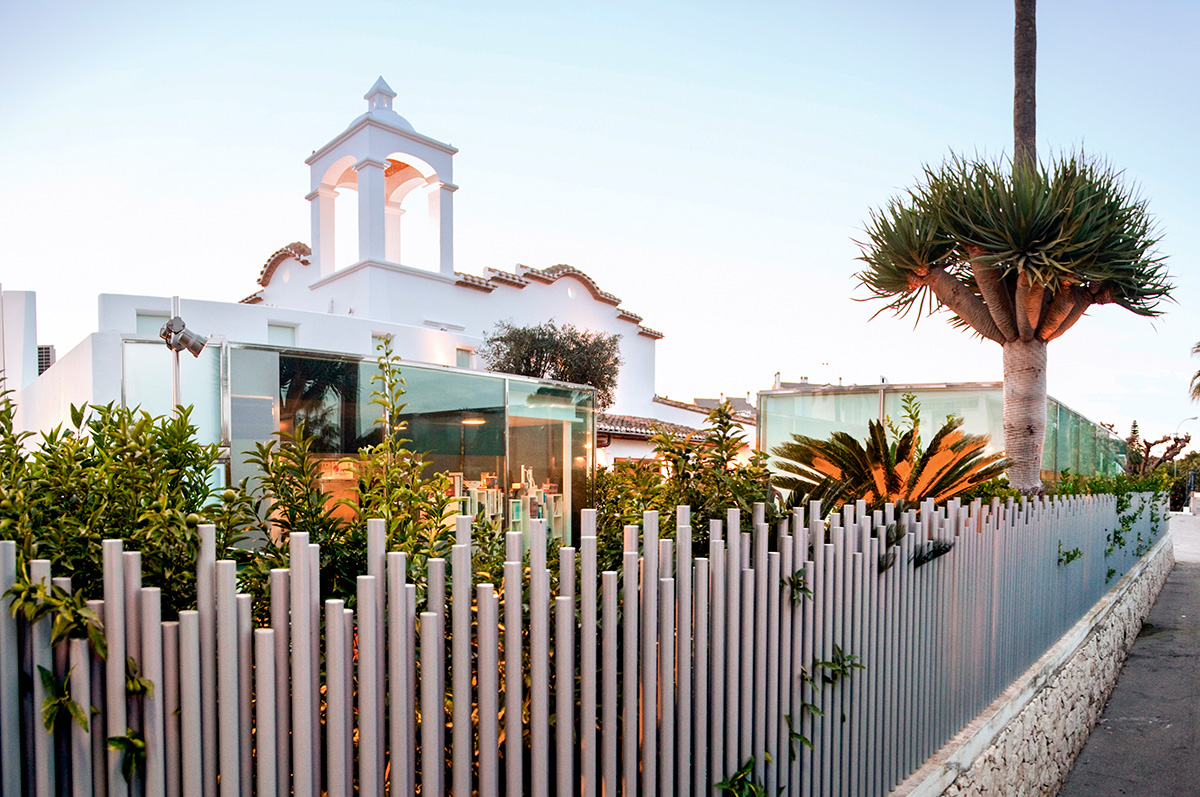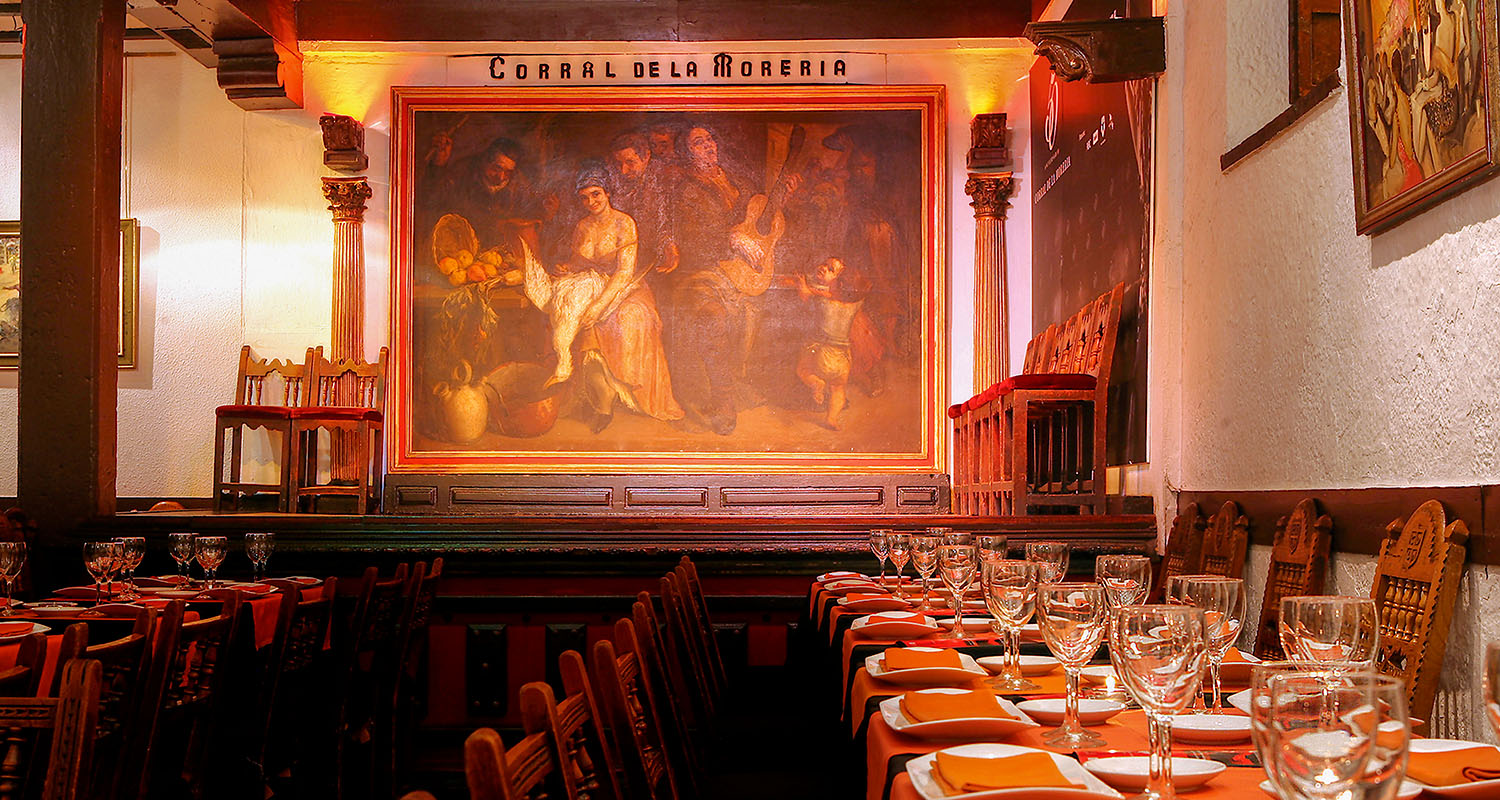
Why Spain Is a Paradise for Foodies
From experimental cuisine in Madrid to small delicacies in San Sebastián and outstanding fish cuisine in Cádiz, Spain is a true paradise for gourmets.
May 22 2023
A tapas trip through Spain
Restaurante Media Manga © optional
A word of warning: The world will be a different place after dining at El Corral de la Morería. Experiencing a meal at this one-star restaurant at the center of Madrid could probably best be described as a rocket launch, when the slider is pushed from zero to a hundred – with the tiny difference that diners at Corral aren’t being blasted into space, but straight into the beating heart of Spain. After five hours in this foodie heaven, and after nine complex courses, a sherry pairing that’s nothing short of a revelation, and a first-rate flamenco concert, you’re gently returned to earth – and are more than ready for everything that follows.
Paco Roncero Restaurante © KlunderBie
There’s a good reason that the Corral, which opened in 1956, attracts crowds of A-list guests, whose pictures now plaster the walls. Ronald Reagan and the Rolling Stones, Salvador Dalí and Che Guevara, Nicole Kidman and Justin Bieber – alongside the outstanding fine dining experience and the 1,200 vintage sherries stocked in the cellar, all these celebrities presumably came here in search of one thing: to immerse themselves in the Spanish lifestyle and experience its inimitable sensuality, pride and generous pinch of craziness.
"StreetXO" by David Muñoz © picturedesk
For their tamer, more subdued northern cousins, the Spanish all-out attack on the senses can be something of a revelation. Always a whisker more rugged and wilder than Italy, the land of dolce vita, and often overshadowed by France, the prototypical gourmet destination, Iberian fine dining has long been unjustly sidelined. And although Spanish haute cuisine slipped slightly under the radar since the massive hype around Ferran Adrià, the newest generation of imaginative, ground-breaking chefs are equally deserving of foodie recognition, from David Muñoz in Madrid to Quique Dacosta from Valencia and many, many more.
Royal Madrid
Corral de la Moreria © optional
One of the best places to start any journey of gourmet discovery is Madrid, the center of the Iberian peninsula and by far Spain’s most important city. Magnificent and rich, the city’s imposing classicistic buildings form a stark contrast to the more Mediterranean, gothic city of Barcelona, for instance. The cuisines of all the regions are represented in the capital – served up at a choice of fine dining restaurants that are attracting international gourmets. Top spots include Paco Roncero’s eponymous two-star restaurant, which resides in a 19th century palace and where childhood memories are reinterpreted in elaborate gastronomical creations. The capital’s culinary star and one of the country’s wildest chefs is Dabiz Muñoz Rosillo, a three-star cook with a signature mohawk. Lauded as the most spectacular fine dining spot in the country, his restaurant DiverXO, pronounced “diver-cho” with its showstopping décor is fully booked months in advance. The food treads a delicious line between avantgarde performance and culinary fine art. Those fortunate enough to bag a table are treated to a dizzying canter through flavors and across textures: a sandwich with lamb brain and bull’s tail, frozen salad, Galician lobster prepared in an Indian style and countless more courses, often with an Asian twist, described by diners as an unforgettable gastronomic experience.
David Muñoz© Adriaan Van Looy All Rights Reserved
“I want to be the best restaurant in the world for my guests,” said Muñoz recently in an interview with the Spanish daily El Pais. Although he occasionally seems like a hyper-self-aware, always buzzing, almost artificial creation, at the Madrid Fusión trade show the star chef recently astonished his audience with a very personal confession: “I have often fallen, have often failed. It’s all about always getting up again.”
Diverxo © provided
This is obviously something Muñoz has a knack for: On the top floor of the luxury department store El Corte Inglés in the fancy Salamanca district he recently raised the curtains on his second dining stage. The much more affordable StreetXO is so popular that that queuing is inevitable. A dozen chefs jostle around the small space, preparing dishes that look like miniature works of art. If you’re sensitive to noise, it may be an idea to avoid StreetXO, but everyone else will relish the intriguing presentation and excellent food. In early 2024, Muñoz will be relocating his restaurants somewhat outside the city.
Bars on every corner
It’s not always this wild in Madrid; you can also kick back at a wine bar, like the trendy Caníbal, and sip one of their incredible natural wines. Spain boasts more bars than anywhere else in the world; in Andalucía alone there are more than in Ireland, Denmark, Finland and Norway combined. As the bars here are the Mediterranean style, they usually open in the morning, some even for breakfast. Not that breakfast is a big deal for the Spanish, who usually make do with a coffee and a croissant, with the majority spending less than ten minutes on the first meal of the day. This has a lot to do with the last meal of the day, which to the confusion and incomprehension of most non-Spanish visitors, is usually not eaten before 10 pm. No other country in Europe eats this late.
Lasarte" restaurant in Barcelona © optional
The late dining times are the result of a political decision made over 80 years ago in 1942. The Spanish dictator Franco changed Spain’s time zone, moving the clocks one hour forward in solidarity with Germany. Although geographically Spain is in the same time zone as Portugal and the United Kingdom, their clocks go by Central European Time, meaning that the sun in Poland can rise two and a half hours earlier than in Spain, which is in the same time zone. The dictatorship lasted for nearly four decades and left deep scars in the country’s psyche. Even before Franco seized power, Spanish society had been deeply divided into two factions, urban-progressives on the one side and clerical-conservatives on the other. The poet Antonio Machado described this as the “two Spains,” a divide that culminated in the tragedy of the Spanish Civil War. The country has struggled to come to terms with the effect of the Franco dictatorship, and for Spain the notion of nationhood is still a tricky political topic. The attempts of some regions to gain independence are still bubbling in the background (Basque Country) or are very much ongoing (Catalonia).
Lasarte" restaurant in Barcelona © optional
The country’s sense of unity is not built on a sense of national spirit, but on shared interests. One thing that all Spanish people can identify with, whether they’re from Andalucía, Catalonia or Castile, is their profound love of food and drink. The magazine Directo al Paladar once wrote that Spain’s national day is the aperitif. The social aspect, the feeling of togetherness, is almost more important than the act of drinking and enjoying a snack. Chat, gossip, stories are all so much more rewarding if they’re accompanied by a glass of wine and a croquette.
Tapas time usually begins around 6 or 7 in the evening, when the bars start to fill up and drinks and snacks are served. Although tourists may be sorely tempted to keep eating, also because everything tastes so delicious, the Spanish are very much focused on an evening meal later on. People don’t gorge, but tend to enjoy a glass of wine or a caña – a draft beer, accompanied by a tapita. This could be a pincho moruno, a skewer with chunks of juicy beef, a slice of tortilla, which tastes different wherever you are, or an ensaladilla rusa, a potato salad with mayonnaise.
San Sebastián © Shutterstock
The basic range comprises anything between one and two dozen tapas, most served at bars all over the country. Some bars rise above this standard quality, stunning even the most pampered gourmets by producing bowls and plates laden with miniature works of culinary art. For instance, at Ganbara in San Sebastián, a bar with a history and a favorite of renowned Spanish chef Juan Mari Arzak. The tapas here are called pinxtos, and are accompanied by the finest wines. The bar Gran Sol in Hondarribia directly on the border to France has won countless prizes for creations such as foie gras with caramelized cheese, concentrated juice and mustard à l’ancienne.
The Basque Country has always been an engine driving the country’s culinary development, and one of the most famous Iberian fish dishes originates from here: Bacalao al pil pil, a delectable concoction of salt cod with a layer of fried garlic served in an olive oil emulsion. So simple, but also so good, as anyone who has sampled it will agree. The constant rivalry with neighboring France and the fear of being overshadowed by this culinary behemoth has always spurred cooks to even greater heights. That being said, Arzak readily admitted France’s leadership in fine dining, declaring at a trade fair in San Sebastián in November 2021, “France has taught us a lot, and we have taught them a lot (…) But the French have a great gastronomical culture, the greatest.”
© provided
San Sebastián – called Donostia in the Basque language – is still the uncontested center of fine dining with an unrivalled 11 Michelin-starred restaurants in the city and countless others in the surrounding region. The grand master of Spanish chefs, Martín Berasategui, is also a Basque native. He has two restaurants with the highest rating in the Guide Michelin: an eponymous one in Basque Country and Lasarte in Barcelona.
Cooking elite in the northeast
Quique Dacosta © optional
Catalonia, the autonomous region around Barcelona, is another of the country’s fine dining powerhouses: nearly one quarter of all Iberian top restaurants (49 of 228) are located in this region in northeastern Spain. The region’s culinary appeal, especially for well-heeled international diners, is currently spearheaded by the Roca brothers Jordi, Joan and Josep Roca, who have scooped most of the major prizes with their triple-starred El Celler de Can Roca in Girona and have twice topped the list of the World’s 50 Best. Less well-known internationally, but equally good, is the ABaC, where Jordi Cruz creates mind-blowingly complex dishes.
"Quique Dacosta" restaurant in Dénia © optional
To dine in the region with Spain’s hippest gastronomy, you need to travel quite a lot further south. Andalucía, economically fragile but perennially popular with tourists, boasts a fascinating Moorish heritage. The region’s cuisine has truly blossomed in recent years; the most prominent representative is Ángel León, a veritable fine dining Titian whose three-star restaurant Aponiente in the province of Cadiz is famed for its fish dishes. León is deeply passionate about his ingredients to the extent that he grows his own plankton in special tanks and uses the harvest to create new dishes. Even below these stellar heights, there is plenty in the region to delight the taste buds, including Benito Gómez’ Bardal in Málaga and the highly-lauded, family-run Mesón Sabor Andaluz in Alcalá del Valle, whose young head cook Pedro Aguilera was recently proclaimed a “Revelation Chef” at the Madrid Fusión trade fair.
Quique Dacosta's 3-star restaurant © Pelut i Pelat
Ultimately, Spain’s lauded creative cuisine only exists in its present form because of the solid foundation laid by the Spanish regions. Together, these culinary traditions have brought forth the unrivalled Jamon Ibérico de Bellota, the incredible range of delicious cheeses from all around the country, from Castile to the Balearic Islands (like Mahón from Menorca) and specialties such as Paella Valencia (only authentic with rabbit and chicken – no seafood!) or the Madrilenian chickpea stew Cocido. And we haven’t even touched on the vast variety of fine olive oils from Extremadura and Andalucía, the best of which take home prizes every year. Continuará!
Text: Philipp Elsbrock
